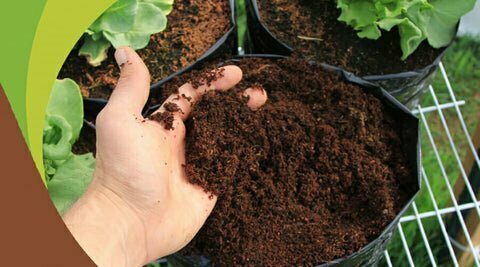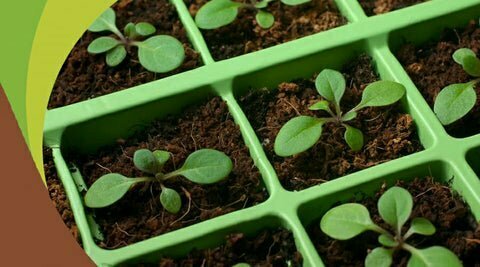How to grow vegetables in coco coir peat
One of the main joys of having your own garden or allotment is being able to grow some delicious vegetables. However, with the sustainability issues surrounding conventional planting materials, many horticulturists are turning to more environmentally-friendly methods for growing their veg.
One such method growing in popularity is the use of coco coir, created from the fibrous husks found within a coconut. It’s a viable alternative to peat moss, which can take hundreds of years to replenish once harvested.
Growing vegetables with coco peat is similar to using conventional composts or soils. However there are a few slight differences. Taking note of these differences and adjusting your gardening routine accordingly is guaranteed to reap huge benefits to your vegetable growing, as well being far more friendly to the environment.
COCO PEAT IS HIGHLY ABSORBENT
A primary benefit to coco coir is how excellent it is at both absorbing and retaining water. When watering vegetables planted in peat moss compost, you may have noticed that the water will sit on the surface for a while before being absorbed. Coco peat will absorb water instantaneously, providing immediate hydration. This means better root growth, invariably creating bigger, stronger plants.
Once coco peat has water, it does a very good job of keeping hold of it. This means you will be able to water your plants far less frequently, reaping a larger crop with less effort.

COCO PEAT IS PH NEUTRAL
Although coco peat is great for planting in pots, its pH value makes it ideal for use in a garden. Before planting anything outdoors, it’s essential to consider the acidity of a soil and decide whether it needs to be neutralised. With a pH of approximately 5.8 – 6.8, coco coir is slightly alkaline, meaning no extra products are required to neutralise soil. This level of acidity is also considered to be perfect for slowly releasing nutrients.
COCO COIR IS FULLY RECYCLABLE
Another huge benefit to peat-free coco coir compost, especially in comparison to peat moss, is the fact it is re-usable. Once it has been used to grow a plant, it simply needs to be rinsed in filtered water, drained and used again, making it both environmentally and wallet-friendly.
It is worth baring in mind that coco coir is not fully bio-biodegradable. If sent to a landfill it will take a considerable amount of time to fully break down. In the interest of sustainability, it is not recommended to be thrown away.
EXTRA ADVICE ON PLANTING VEGETABLES IN COCO PEAT
Whilst there are many benefits to growing vegetables in coco peat, there are a couple of things worth being aware of to ensure optimum growth in your garden:
Coco peat does not harbour any nutritional value of its own. Because of this, it’s a good idea to mix coco peat with an equal quantity of compost to plant vegetables in, in order to ensure the best possible growth.

The most highly recommended nutrients for vegetable growing are nitrogen, phosphorus and potassium. Be sure to assess the quantities carefully, as overdoing the nutrients can have detrimental effects. This is the case no matter what compost/soil you’re using, so assess the needs of the individual vegetable you are growing for best results. Using an organic fertiliser or plant food is also another way to ensure your vegetables are getting all the goodness they require using coco coir.
Another aspect to consider if you’re planning to grow vegetables in coco coir is how soft it can be when in peat form, especially when planting climbing vegetables such as tomatoes or beans. Whilst compost is rigid enough to support stakes alone, a little extra effort is needed with coco coir. One method is to use two bigger, stronger poles (try bamboo to keep the environment in mind) on either side of the bed, connected by rope. From here you can tie threads to your plants, in order to ‘train’ them to climb vertically.










